From delicate necklaces to ornate rings, the lotus flower motif adorns jewelry pieces, each carrying its unique significance.
Join us as we explore the rich cultural heritage, spiritual symbolism, and personalized expressions conveyed through lotus flower jewelry designs.
Discover the elegance of this revered flower as it blooms gracefully in the world of jewelry, inviting wearers to embrace inner strength, spiritual growth, and the enduring beauty of nature.

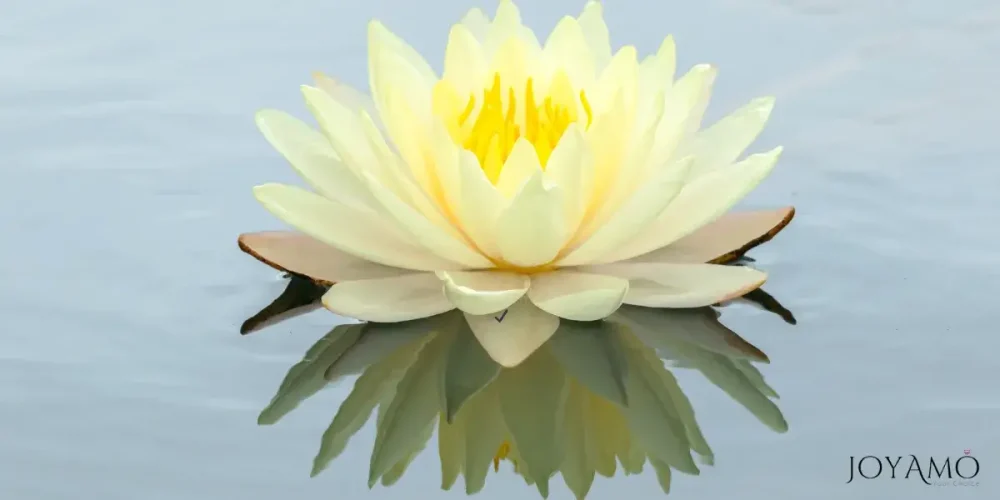

The Lotus Flower Symbolism
The Lotus flowers have held profound significance across diverse cultures in history, each with unique symbolism and meaning.
In ancient Egypt, the lotus flower symbolized rebirth and the sun god Ra’s journey across the sky.
The flower’s ability to emerge from murky waters and bloom anew mirrored the concept of resurrection and the cycle of life and death.
In Hinduism, the lotus holds sacred symbolism, representing purity, enlightenment, and divine beauty.
The lotus is associated with numerous deities, particularly the goddess Lakshmi, who is often depicted seated upon a blooming lotus flower.
In Hindu mythology, the unfolding petals of the lotus symbolize the expansion of the soul’s spiritual consciousness.
Buddhism also reveres the lotus flower as a symbol of purity and spiritual awakening.
The lotus is often depicted in Buddhist art, with each stage of its growth representing a stage of enlightenment.
The roots of the lotus, buried deep in the mud, represent the journey through suffering and attachment, the blossoming flower above the water symbolizes the attainment of enlightenment and liberation from earthly desires.
In Chinese culture, the lotus flower holds multiple layers of symbolism, representing purity, harmony, and prosperity.
The lotus is often associated with yin and yang, with its roots in the mud symbolizing the yin, or feminine, aspect, and its blossoms representing the yang, or masculine, aspect.
The lotus represents fertility and abundance, with its ability to produce numerous seeds.
Other cultures also interpret the lotus flower’s symbolism in unique ways.
In Japanese culture, the lotus represents resilience and the ability to rise above adversity, while in Tibetan Buddhism, it symbolizes the purity of body, speech, and mind.
In Native American traditions, the lotus is seen as a symbol of transformation and spiritual growth.
The significance of the lotus flower in different cultures highlights its universal appeal as a symbol of beauty, purity, and spiritual enlightenment.
Despite variations in interpretation, the lotus remains a powerful emblem of resilience, growth, and the inherent potential for spiritual awakening across diverse cultural landscapes.
The significance of lotus flowers in different cultures
| Culture | The symbolism of Lotus Flowers |
|---|---|
| Ancient Egypt | Symbol of rebirth, resurrection, and the sun god Ra’s journey across the sky. |
| Hinduism | Represents purity, enlightenment, and divine beauty; associated with various deities. |
| Buddhism | Symbolizes spiritual awakening, enlightenment, and liberation from worldly desires. |
| Chinese Culture | The symbolism of Lotus Flowers |
| Japanese Culture | Symbolizes resilience and the ability to rise above adversity. |
| Tibetan Buddhism | Represents the purity of body, speech, and mind. |
| Native American | Seen as a symbol of transformation and spiritual growth. |



Lotus Flower Jewelry Designs
Lotus flower jewelry designs offer timeless elegance and carry profound symbolism, making them loved pieces in any jewelry collection.
From delicate necklaces to elaborate earrings, rings, and bracelets, lotus flowers adorn jewelry, each reflecting the flower’s beauty and significance.
🌸 Lotus Necklaces
Lotus flower necklaces come in various styles, from minimalist pendants to ornate statement pieces.
They symbolize purity, enlightenment, and spiritual growth, representing inner peace and beauty.
Personalization options include:
- Engraving initials or meaningful dates on the pendant.
- Adding birthstones to represent loved ones.
- Choosing specific metals or finishes to suit personal style.
🌸 Lotus Earrings
Lotus flower earrings exude grace and femininity in studs, dangles, or hoops.
They symbolize resilience and the ability to rise above adversity, making them meaningful accessories for everyday wear.
Personalization options include:
- Customizing with birthstones or gemstones.
- Choosing different earring styles to match individual preferences.
- Engraving initials or symbols on the backs of the earrings.
🌸 Lotus Rings
Lotus flower rings are symbolic of spiritual awakening and the journey towards enlightenment.
They can be worn as statement pieces or as delicate accents, representing the beauty and resilience of the human spirit.
Personalization options include:
- Engraving inspirational quotes or affirmations inside the band.
- Choosing metals and finishes that resonate with personal style.
- Adding gemstones or diamonds for extra sparkle.
🌸 Lotus Bracelets
Lotus flower bracelets come in various designs, from bangles to cuffs and charm bracelets.
They symbolize growth, transformation, and the pursuit of inner peace, serving as meaningful accessories for any occasion.
Personalization options include:
- Adding charms or pendants with personal significance.
- Choosing bracelet styles that align with individual preferences.
- Engraving names or special messages along the bracelet’s band.
Lotus flower jewelry designs offer aesthetic beauty, profound symbolism, and personal significance.
As a reminder of spiritual growth, resilience, or inner peace, lotus flower jewelry serves as a timeless expression of beauty and meaning.

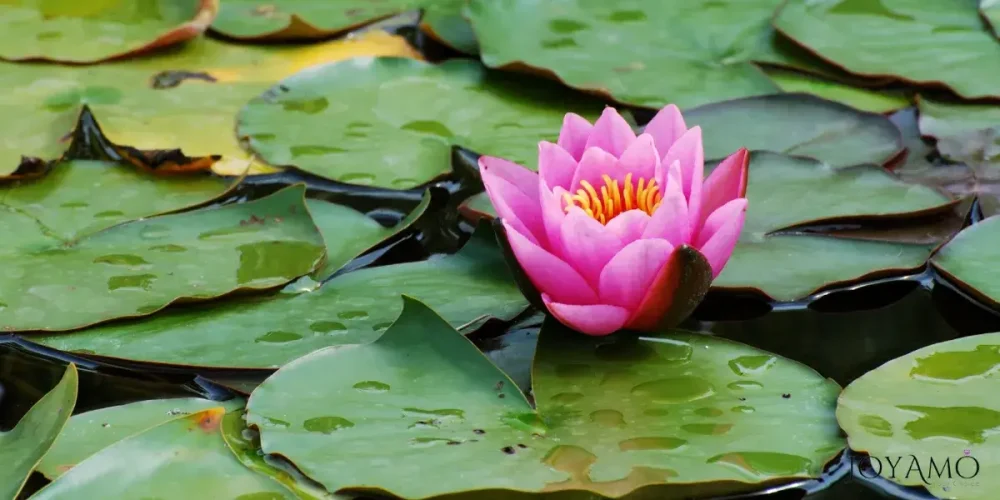
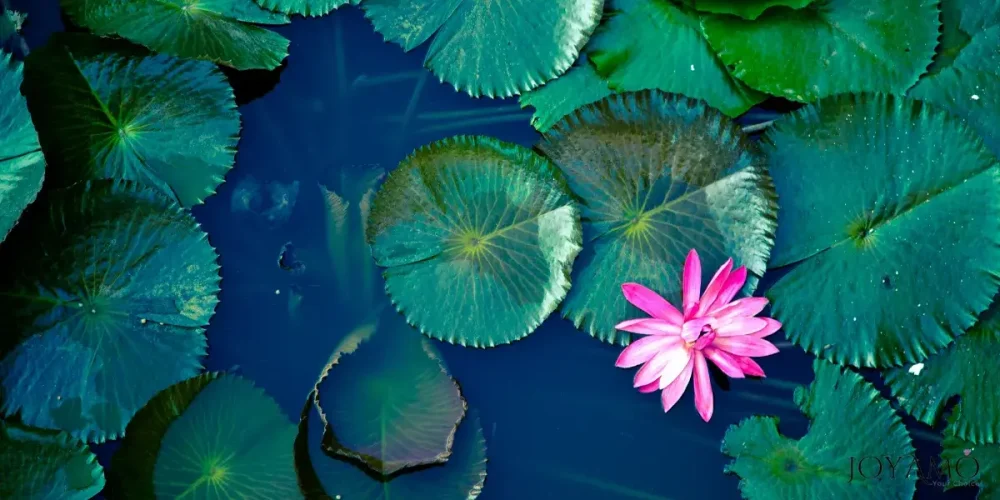
Lotus Flower Meaning in Personalized Jewelry
Lotus flower meaning in personalized jewelry offers wearers a profound connection to its symbolism of purity, enlightenment, and spiritual growth.
Each piece becomes a wearable reminder of inner strength, resilience, inspiration, and empowerment.
Personalized necklaces and personalized bracelet options further enhance the significance of lotus flower jewelry, allowing individuals to infuse their pieces with their unique stories and aspirations.
- Customization: Personalized lotus flower jewelry offers the opportunity for customization, allowing wearers to tailor their pieces to reflect their individuality and personal journey.
- Symbolism: Lotus flower motifs convey messages of growth, transformation, and inner peace, serving as constant reminders of one’s potential for spiritual enlightenment.
- Meaningful Engravings: Engraving initials, meaningful dates, or inspirational quotes adds layers of significance to lotus flower jewelry, creating personalized pieces that hold sentimental value.
- Birthstones and Gemstones: Adding birthstones or gemstones to lotus flower designs allows wearers to incorporate additional layers of symbolism and personal meaning.
- Daily Inspiration: Wearing personalized lotus flower jewelry offers daily inspiration and encouragement, fostering a sense of connection to the deeper meanings of life and the beauty of the human spirit.
Lotus Flower in Art and Literature
The lotus flowers have inspired countless artists and writers throughout history, appearing in various forms of art and literature.
In visual arts, famous paintings like Claude Monet’s “Water Lilies” series and Japanese woodblock prints by artists like Hiroshige and Hokusai depict the serene beauty of lotus flowers amidst tranquil water landscapes.
These artworks often evoke a sense of peace, harmony, and spiritual transcendence, reflecting the lotus flower’s symbolism of purity and enlightenment.
In literature, the lotus flower is a recurring motif in poems, stories, and religious texts.
In ancient Indian scriptures like the Vedas and Upanishads, the lotus is praised as a symbol of spiritual purity and divine beauty.
In Chinese poetry, lotus flowers are often used as metaphors for resilience and perseverance, with poets admiring their ability to bloom gracefully despite growing in murky waters.
Across cultures, the lotus flower symbolizes spiritual awakening, enlightenment, and the triumph of purity over adversity.
Through art and literature, artists and writers have conveyed the timeless beauty and profound symbolism of the lotus flower, inspiring people to contemplate its deeper meanings and embrace its power.
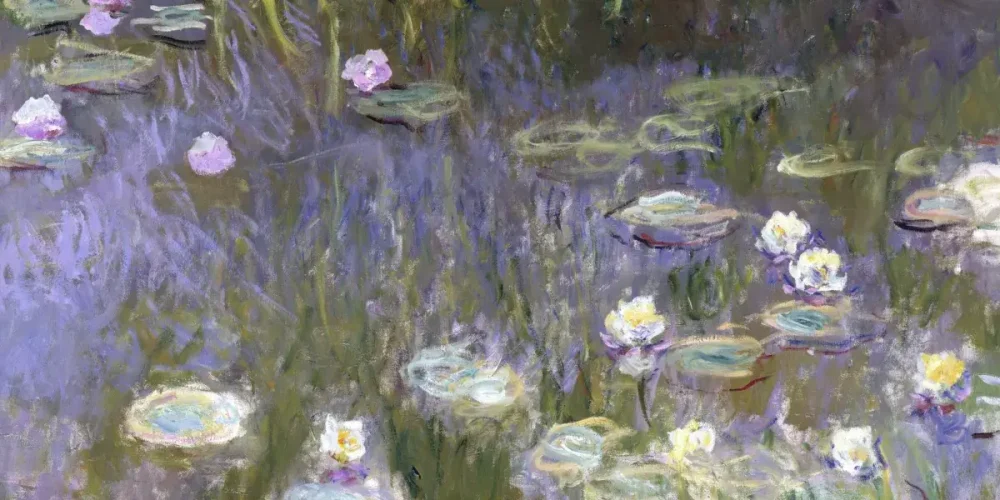





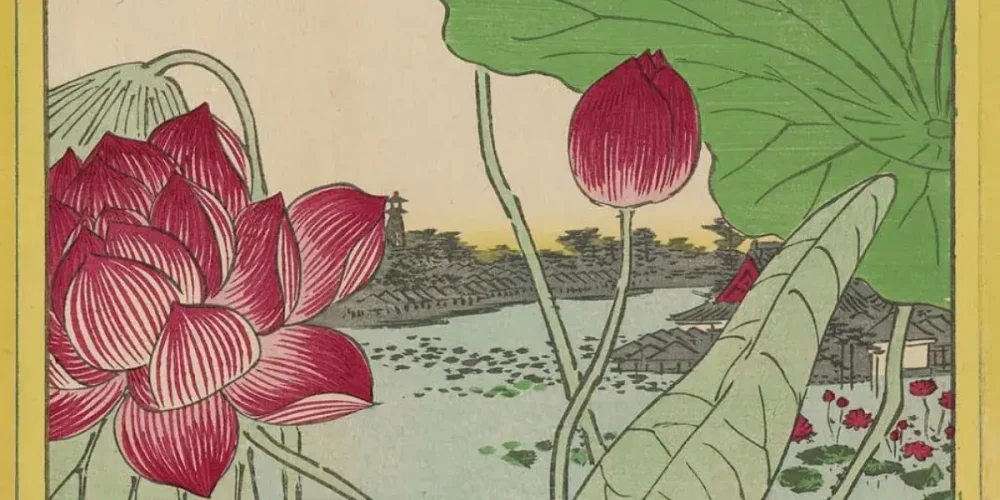

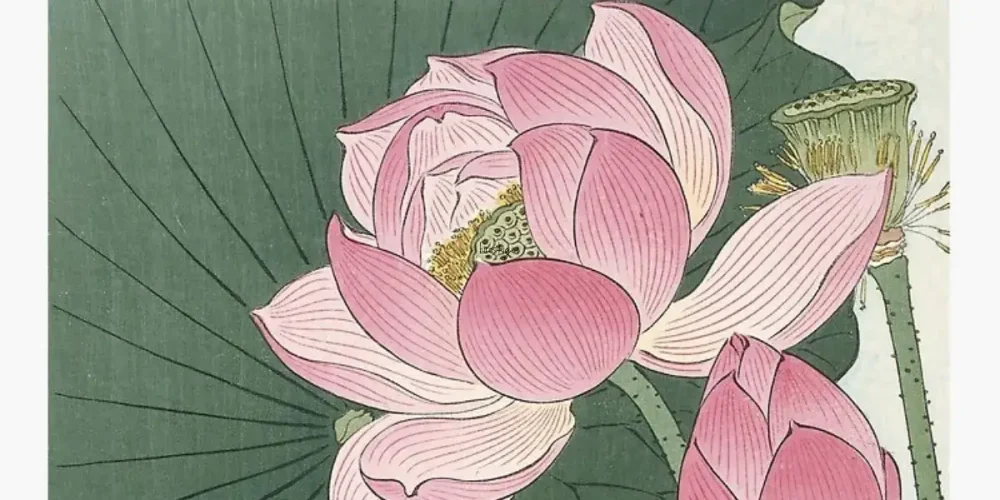
Lotus Flower in Meditation and Yoga
The lotus flower holds deep symbolic significance, representing spiritual enlightenment, purity, and inner peace.
The lotus’s roots firmly anchored in the mud symbolize the groundedness and resilience required to navigate life’s challenges, while its petals blossoming above the water signify the enlightenment and the transcendent nature of the soul.
Lotus flower imagery is often used as a focal point during meditation, with practitioners visualizing themselves as the lotus, rising above the murky waters of the mind to reach a state of clarity and tranquility.
In yoga philosophy, the lotus posture (Padmasana) is revered as a sacred pose for meditation, symbolizing the blossoming of the spiritual heart center, or Anahata chakra.
The lotus flower’s symmetry and beauty serve as a visual representation of the balance and harmony sought in yoga practice.
By incorporating lotus imagery into meditation and yoga, practitioners are reminded of the inherent potential for growth and transformation within themselves, leading to a deeper connection with the divine and a profound sense of inner peace and fulfillment.
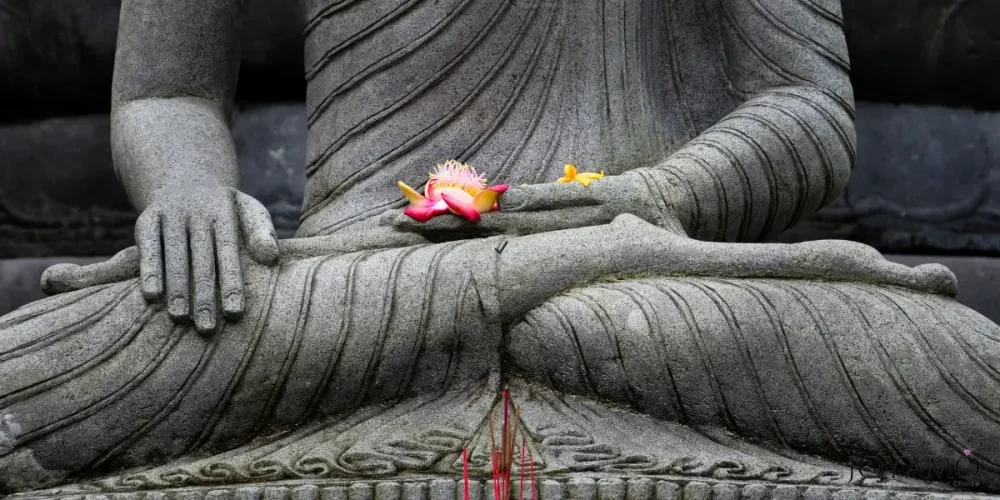
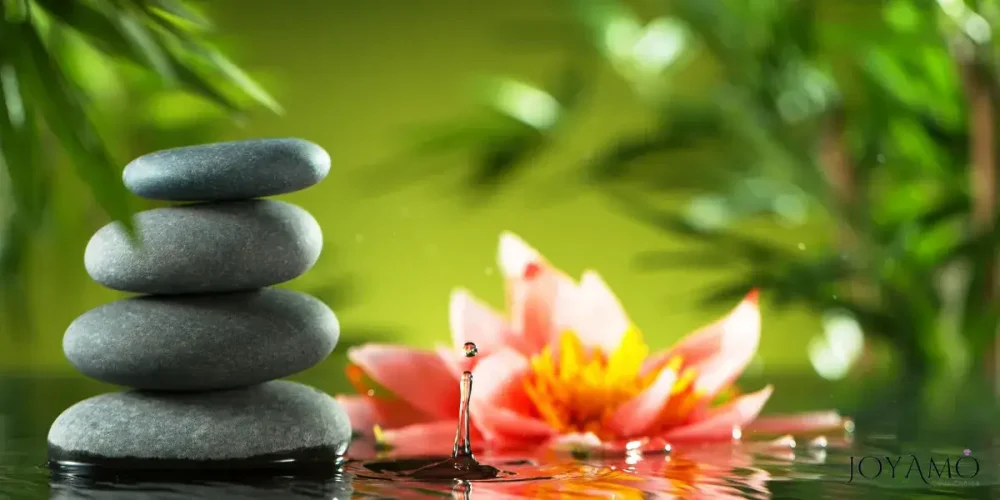

Botanical Characteristics of the Lotus Flower
The lotus flower, known for its exquisite beauty and symbolic significance, boasts remarkable botanical characteristics that have fascinated humans for centuries.
From its vibrant colors to its unique adaptations, the lotus stands out as a captivating emblem of purity and enlightenment.
Description of Lotus Flower
Lotus flowers come in a variety of colors, including white, pink, red, and blue, with each hue carrying its symbolic meaning.
The most common color is white, which represents purity and spiritual enlightenment.
Lotus flowers are typically large and showy, with petals arranged in multiple layers around a central seed pod.
Each flower features a prominent yellow center, known as the receptacle, which contains numerous carpels.
One of the most striking features of the lotus flower is its ability to emerge from murky waters unblemished.
Despite growing in muddy or stagnant ponds, the lotus remains unstained, symbolizing purity, resilience, and the potential for spiritual growth amidst adversity.
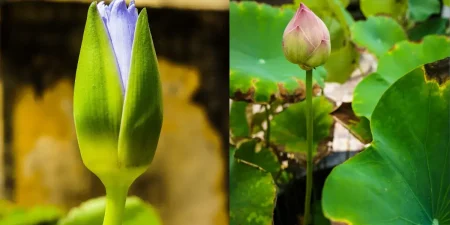
Habitat and Growth Cycle of the Lotus Flower
Lotus plants are native to various regions across Asia, including China, India, and Egypt, where they thrive in shallow, freshwater environments such as ponds, lakes, and slow-moving rivers.
They prefer warm, tropical climates with plenty of sunlight and nutrient-rich soil.
The lotus plant follows a unique growth cycle, beginning with the emergence of its iconic round leaves, which float on the water’s surface.
These leaves are water-repellent and have a waxy coating that prevents them from becoming waterlogged.
As the plant matures, long stalks emerge from the water, bearing large, showy flowers at their tips.
Lotus flowers bloom during the daytime, opening in the morning and closing at night.
The blooming period typically lasts for several days, with individual flowers gradually wilting and falling from the plant.
After pollination, the flowers give way to distinctive seed pods, which resemble showerheads and contain numerous seeds embedded in spongy tissue.


Lotus Flower Cultivation Methods
Cultivating lotus plants requires careful attention to their specific environmental requirements.
They thrive in full sunlight and require nutrient-rich, muddy, or silty soil to anchor their roots.
Lotus plants are typically propagated from seeds or tubers, with seeds germinating in shallow water before being transplanted into their permanent aquatic habitat.
Lotus cultivation has a long history in many cultures, where it is revered for its spiritual significance and aesthetic beauty.
In addition to their ornamental value, lotus plants are also cultivated for their edible seeds, which are used in traditional Asian cuisines and herbal medicine.
Overall, the lotus flower’s botanical characteristics, habitat, growth cycle, and cultivation methods underscore its enduring appeal and cultural significance.
From its mesmerizing blooms to its resilient nature, the lotus continues to inspire awe and admiration, serving as a timeless symbol of purity, enlightenment, and spiritual growth.
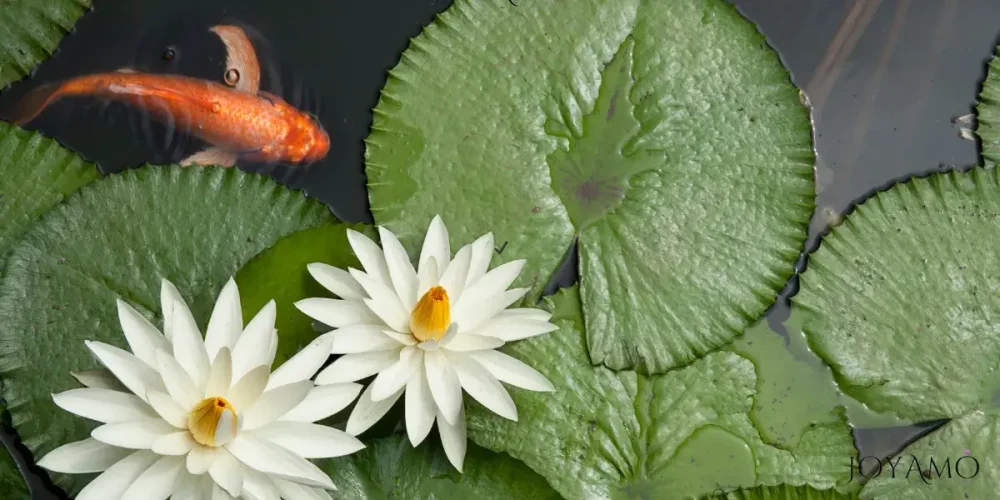

Botanic Classification of the Lotus Flower
The lotus flower, revered for its exquisite beauty and symbolic significance, exists in a diverse array of varieties and types, each boasting unique characteristics and attributes.
From the classic white lotus to vibrant hybrids and rare cultivars, the world of lotus flowers is a kaleidoscope of colors, shapes, and sizes.
Classic White Lotus (Nelumbo nucifera)
The classic white lotus, also known as Nelumbo nucifera or the Sacred Lotus, is perhaps the most iconic and widely recognized variety.
With its large, showy flowers and fragrant aroma, the white lotus symbolizes purity, enlightenment, and spiritual awakening.
It typically blooms in shades of white or pale pink, with delicate petals arranged in multiple layers around a central receptacle.
The white lotus is native to Asia, where it has been cultivated for thousands of years for its ornamental and cultural significance.
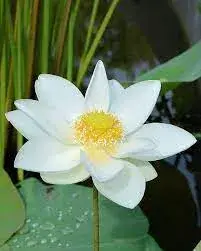
Pink Lotus (Nelumbo nucifera)
The pink lotus is a popular variation of the Nelumbo nucifera species, prized for its soft, pastel-colored blooms and delicate fragrance.
It is often associated with love, compassion, and devotion, making it a favorite choice for religious ceremonies and wedding celebrations.
Pink lotus flowers range in hue from pale pink to deep rose, with petals that may exhibit subtle variations in color and texture.
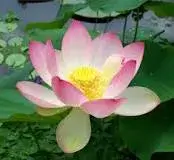
Red Lotus (Nelumbo lutea)
The red lotus, scientifically known as Nelumbo lutea, is characterized by its striking crimson flowers and bold, vibrant appearance.
Unlike the classic white and pink lotuses, which belong to the Nelumbo nucifera species, the red lotus belongs to a different botanical group known as the American lotus.
Native to North America, the red lotus is often found in freshwater habitats such as ponds, lakes, and marshes.
Its dramatic blooms attract pollinators such as bees and butterflies, adding color and vitality to aquatic ecosystems.
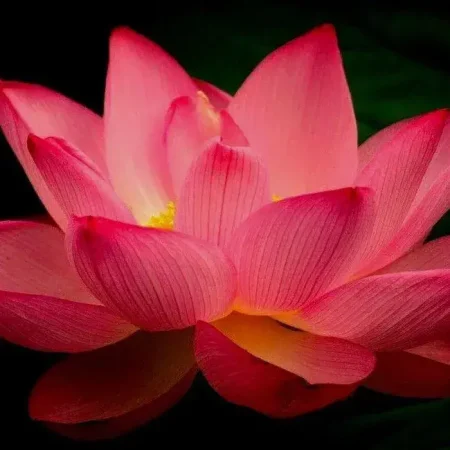
Hybrid Varieties
In addition to the classic white, pink, and red lotus varieties, hybrid cultivars have been developed through selective breeding and hybridization techniques.
These hybrid lotus flowers exhibit a wide range of colors, including yellow, orange, purple, and bi-colored combinations.
Hybrid varieties may also feature unique characteristics such as double blooms, variegated petals, or enhanced fragrance.
While hybrid lotus flowers may not possess the same cultural or symbolic significance as their wild counterparts, they offer gardeners and enthusiasts a diverse palette of colors and forms to explore and enjoy.
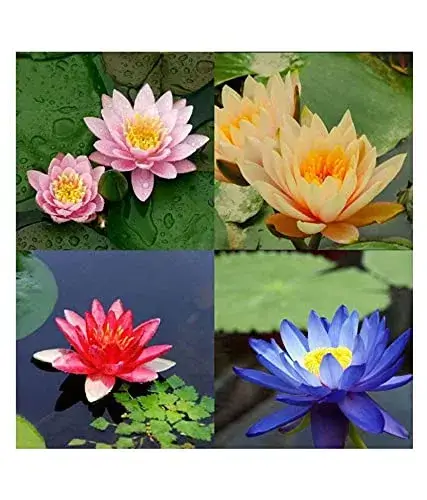
Rare and Exotic Varieties of Lotus
In addition to the more common lotus varieties, there are also rare and exotic cultivars that command attention with their extraordinary beauty and rarity.
These specialty lotus flowers may feature unusual colors, patterns, or forms that set them apart from traditional varieties.
While they may be more challenging to cultivate and obtain, rare and exotic lotus cultivars are highly prized by collectors and enthusiasts for their rarity and aesthetic appeal.
In conclusion, the world of lotus flowers is rich and diverse, with a wide range of varieties and types to explore.
From the classic white lotus to vibrant hybrids and rare cultivars, each variety offers its unique charm and allure, adding beauty and elegance to gardens, ponds, and aquatic landscapes around the world.
Medicinal and Therapeutic Uses of the Lotus Plant
The lotus plant, revered for its symbolic significance and aesthetic beauty, also possesses a rich array of medicinal and therapeutic properties that have been recognized and utilized for centuries.
From ancient civilizations to modern herbalists, the lotus has been valued for its healing potential and therapeutic benefits.
Medicinal Properties
Lotus plants contain a wealth of bioactive compounds that contribute to their medicinal properties.
The roots, seeds, leaves, and flowers of the lotus are all utilized in traditional medicine and herbal remedies.
Among the key medicinal properties of the lotus plant are:
- Anti-inflammatory: Lotus contains compounds with anti-inflammatory properties, which can help alleviate pain and reduce inflammation associated with conditions such as arthritis and rheumatism.
- Antioxidant: The antioxidants found in lotus plants help protect cells from oxidative damage caused by free radicals, thereby reducing the risk of chronic diseases and promoting overall health and longevity.
- Antibacterial and Antifungal: Lotus extracts exhibit antibacterial and antifungal activity, making them effective against a wide range of pathogens and microbial infections.
- Digestive Aid: Lotus seeds are rich in dietary fiber, which promotes digestive health by regulating bowel movements and preventing constipation. Additionally, lotus root contains compounds that support liver function and aid in detoxification.


Therapeutic Benefits of Lotus-Based Products
Lotus-based products, including essential oils and skincare formulations, harness the therapeutic properties of the plant for various health and wellness applications.
Some of the key therapeutic benefits of lotus-based products include:
- Skin Health: Lotus essential oil is prized for its ability to nourish and rejuvenate the skin. It helps maintain skin hydration, improves skin elasticity, and reduces the appearance of wrinkles and fine lines. Lotus-based skincare formulations, such as creams and serums, are used to treat acne, eczema, and other skin conditions.
- Relaxation and Stress Relief: The aromatic compounds found in lotus essential oil have a calming effect on the mind and body, promoting relaxation and stress relief. Lotus-based aromatherapy products, such as diffusers and massage oils, are used to alleviate anxiety, insomnia, and tension headaches.
- Hair Care: Lotus extracts are incorporated into hair care products for their nourishing and strengthening properties. Lotus-based shampoos and conditioners help improve hair texture, prevent breakage, and stimulate hair growth.
- Aromatherapy: Lotus essential oil is widely used in aromatherapy for its uplifting and energizing scent. It helps boost mood, increase mental clarity, and enhance overall well-being.
The medicinal and therapeutic uses of the lotus plant are as diverse as they are ancient.
From its anti-inflammatory and antioxidant properties to its skin-nourishing and stress-relieving effects, lotus-based products offer a natural and holistic approach to health and wellness.
As scientific research continues to uncover the many benefits of the lotus, its role in traditional medicine and modern healthcare is likely to expand, further solidifying its status as a revered botanical treasure.
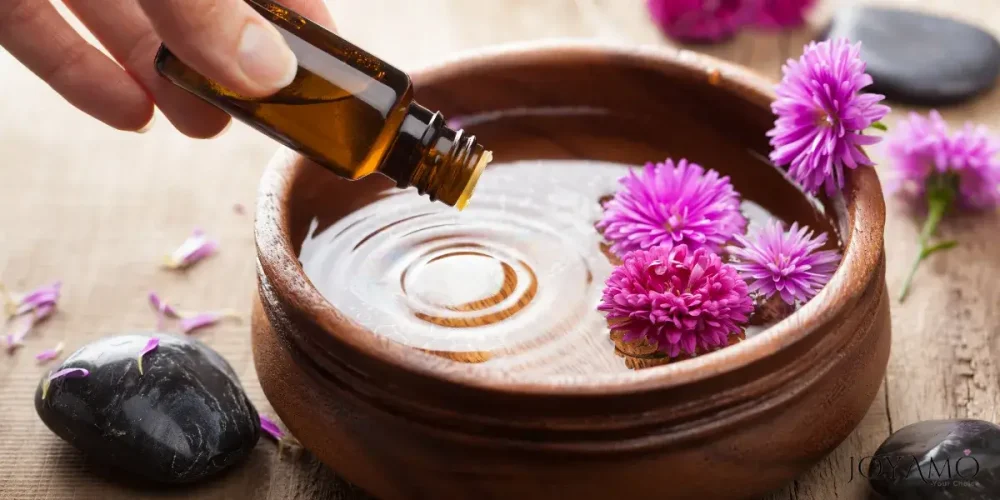

Environmental and Ecological Importance of the Lotus Flower
The presence of lotus flowers is vital for the health and harmony of water environments, acting as a species that promotes biodiversity and supports a variety of plant and animal life.
Being native to freshwater areas like ponds, lakes, and flowing rivers lotus plants contribute to the ecological balance of these habitats in multiple ways.
To begin with, lotus plants help maintain water quality by absorbing nutrients such as nitrogen and phosphorus from their surroundings.
Through this process called phytoremediation, they prevent eutrophication and algae overgrowth that can harm life.
Moreover, the large leaves and intricate root systems of lotus plants serve as homes for creatures like fish, amphibians, invertebrates, and waterfowl.
These animals depend on lotus environments for food sources, breeding grounds, and nesting places. This highlights the importance of lotus ponds in preserving species diversity and ecological stability.
It is crucial to take steps to conserve and protect lotus habitats to ensure the well-being of ecosystems and the survival of plant and animal species that rely on them.
Conservation efforts may involve projects to restore habitats control species impact or establish protected zones to safeguard lotus populations along, with their wildlife.
Spreading knowledge about the significance of lotus environments and advocating for conservation methods could aid in addressing issues like habitat destruction, pollution, and the impact of climate change.
By enhancing our appreciation for the relationships among species in aquatic ecosystems we can collaborate to safeguard these crucial habitats, for the benefit of upcoming generations.
The Lotus Flower and the Culinary World
The lotus flower holds significance, in the world of cooking, where its different parts are valued for their tastes, textures, and health benefits.
In cuisines like those of China, India, and Southeast Asia the lotus plant is a versatile ingredient that enhances the flavors of a wide variety of dishes.
Lotus roots are highly prized for their texture and sweet taste and are commonly featured in stir-fries, soups, and salads.
They can also be thinly fried to make crispy lotus root chips a snack enjoyed in many Asian regions.
The lotus flower seeds found inside its pods are nutritious and packed with protein. They can be boiled, roasted, or ground into flour for use in baking and sweets.
Aside from its uses, the lotus flower is sometimes used as a garnish or edible decoration in dishes. Its delicate petals bring elegance and sophistication to desserts, teas, and cocktails.
In general, incorporating the lotus flower into creations adds a flair and sophistication to meals while also providing nourishment and pleasure, for food lovers worldwide.



💡 Lotus Flower Meaning FAQs
✔ What does the lotus flower mean in mental health?
The lotus flower symbolizes resilience, growth, and the journey for emotional healing. Like the lotus rising from muddy waters to bloom in pristine beauty, individuals can overcome adversity and transform their struggles into strength and wisdom. The lotus serves as a reminder that even in the darkest times, there is potential for growth and renewal, offering hope and inspiration to those facing mental health challenges.
✔ What does the American lotus symbolize?
The American lotus, scientifically known as Nelumbo lutea, symbolizes purity, enlightenment, and spiritual rebirth. Native American cultures view the American lotus as a sacred plant, representing the cycle of life, death, and rebirth. Its ability to thrive in diverse ecosystems, including muddy waters, reflects resilience and adaptability, making it a potent symbol of strength and renewal.
✔ What does a lotus flower symbolize in Japanese culture?
In Japanese culture, the lotus flower symbolizes purity, enlightenment, and spiritual awakening. It is admired for its ability to rise above muddy waters and bloom in pristine beauty, representing the triumph of purity and grace over adversity. Lotus flowers are found in Japanese art, literature, and gardens, and are reminders of inner strength and the potential for growth amidst life’s challenges.
✔ What does Lotus mean on jewelry?
Lotus symbolism on jewelry represents purity, beauty, and spiritual enlightenment. Lotus flower motifs are often used in jewelry designs to convey resilience, growth, and inner peace. Wearing lotus jewelry is a personal reminder of one’s journey toward emotional and spiritual growth, offering strength and inspiration during challenging times.
✔ What does a lotus pendant symbolize?
A lotus pendant symbolizes purity, enlightenment, and the journey towards spiritual awakening. It serves as a tangible reminder of the lotus flower’s transformative symbolism, inspiring wearers to overcome adversity and embrace personal growth. Lotus pendants are often personalized with meaningful engravings or gemstones, allowing individuals to infuse their jewelry with unique stories and aspirations.
✔ Is it good to wear lotus pendant?
Yes, wearing a lotus pendant can be beneficial for its symbolic significance and personal meaning. The lotus flower’s symbolism of purity, resilience, and spiritual growth is a source of inspiration and strength. By wearing a lotus pendant, individuals can carry the timeless message of the lotus, reminding themselves of their inner beauty and capacity for growth amidst life’s challenges.
✔ What’s The Difference between the lotus flower and the water lilies?
The biggest difference is that water lilies (Nymphaea species) leaves and flowers both float on the water’s surface, while lotus (Nelumbo species) leaves and flowers are emergent or rise above the water’s surface. There is one exception: tropical water lilies’ leaves float on the surface just like hardy lilies but their flowers rise above the surface of the water about 6-8 inches.
 SHIPPING
SHIPPING





